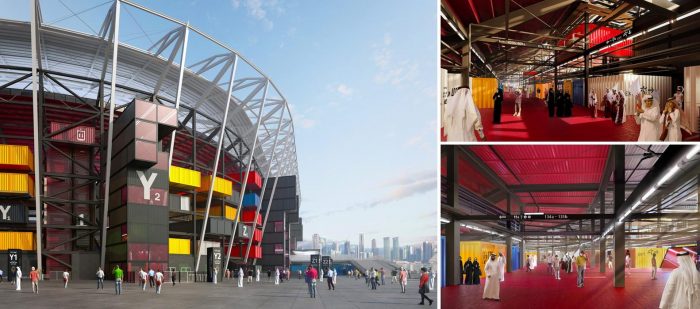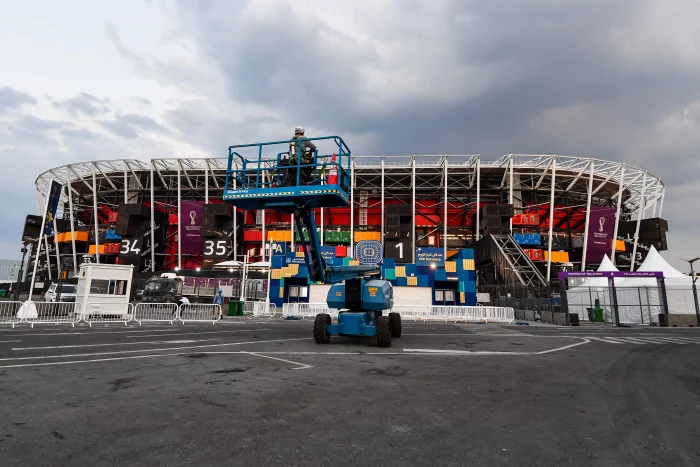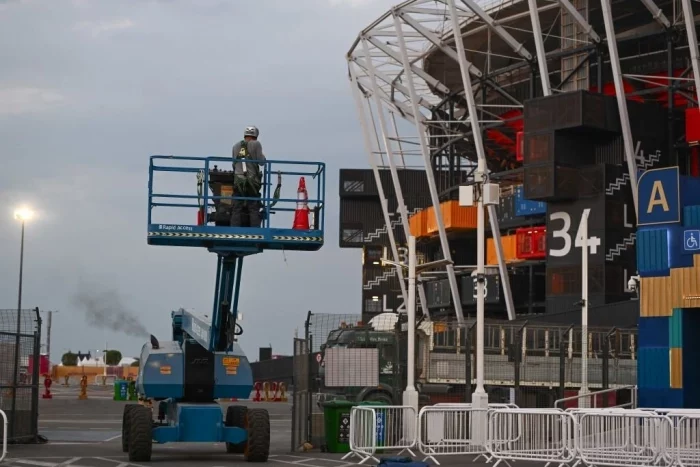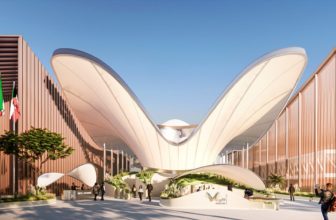Earlier this week, officials confirmed that after hosting only seven games in two weeks at Fifa World Cup in Qatar 2022, the first transportable stadium, stadium 974 for the World Cup, will shortly be demolished.
Stadium 974 Gets Demolished Preparing for an Uruguay Journey:
The stadium, which had 40.000 seats, is being taken apart and will soon be shipped to Uruguay, as per reports. The South American nation is preparing to host the FIFA World Cup in 2030. According to reports, the containers would be sent to Uruguay before rebuilding the stadium.
Designed by Fenwick Iribarren Architects, mainly for FIFA World Cup 2022 in Qatar, The portable stadium has hosted 13 games since it was first established in November 2021. Along with 7 FIFA World Cup 2022 matches and 6 Arab Cup matches played. In addition to the group-stage games, a pre-quarterfinal encounter between Brazil and South Korea took place at Stadium 974.
What Was Unique About Stadium 974?
Stadium 974 was a stadium with significant symbolic meaning: its name refers to the Long Distance Code for dialing Qatar, and it held the same number of steel containers as the Long Distance Code, honoring the significance of maritime trade for this nation, which serves as a vital trading hub between Africa, the Middle East, and Asia and symbolizes Qatar’s naval heritage.
It didn’t stop here; Stadium 974 is also a representation of the practical sustainability every modern scenario must take into account if they are to coexist peacefully with the environment. For instance, its cooling facility, located about 10 kilometers east of central Doha, featured a cutting-edge cooling system created to redistribute the breeze from the Persian Gulf.
Research conducted by Fifa and provided by emission reduction experts also highlighted the significant impact stadium 974 had concerning sustainable approaches. Adding that, it may allow stadiums to be built in more prominent and readily available locations, reducing intra-city fan travel during events and tournaments.
The Future of Stadium 974:
Fifa’s study examined the future of Stadium 974 in three alternative scenarios, in which countries can use it one, two, or three more times in various places. According to the study, moving the temporary stadium within a total sea and road travel distance of 7,033km is more environmentally favorable than constructing two everlasting stadiums if only used once.
The study also emphasized the advantages for the environment of using the stadium locally, or more specifically in Qatar. For two reuses, the maximum trip distance increases to 40,118 km; for three reuses, it rises to 72,616 km.
There appears to be no decision on Stadium 974’s future uses or locations. According to reports, Stadium 974 might travel to Uruguay, which plans to compete in a joint 2030 World Cup bid with Argentina, Chile, and Paraguay. The distance between Doha and Uruguay is roughly 13,000 km, therefore, moving the transportable stadium there would need its reuse in a third location to be more environmentally friendly than constructing innovative stadiums in each place.








